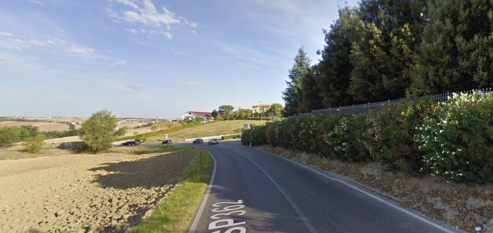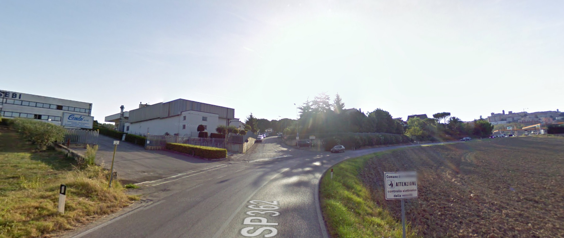Last Saturday I, like many others, was stunned by the news of the death of Michele Scarponi, and every day I’ve become increasingly saddened, indeed, angered by it.
I don’t know why his death should affect me this way and not any other cyclist’s needless demise on the public road and I’m writing not only in the hope that I’ll get it out of my system, but to make some observations I believe need making.
The regular reporting of the vulnerability of cyclists, traffic incidents involving injury to or death of cyclists, seems to be creating a climate of apathy towards these events.
‘Oh, well. Can’t be helped. The driver probably didn’t see the cyclist. Maybe cyclists should be made to wear helmets and wear high visibility clothing.’
However, in this case the cyclist was a professional, expert bike rider, riding on a country road he must have known like the back of his hand, at a time and on a day when the volume of traffic was negligible, but I can’t find any publication, either in the UK, Belgium, the Netherlands, Italy or anywhere on the web that is posing questions or making editorial comment that may help to explain how the incident happened and what can be learned to help other cyclists avoid this fate.
Here’s a typical example of the depth of reporting, the Irish Examiner:
“The 37-year old former winner of the Giro d’Italia was out for an early-morning training ride when he collided with a van at a crossroads (sic). He was killed instantly.”
Where are you, Mr Kimmage and Mr Walsh?
The incident did not occur at a crossroads but a ¨Y¨ junction where the Via Schiavoni joins the Via dell’Industria and gives access to an industrial estate. Scarponi was travelling westwards along the Via dell’Industria, away from Filotrano. This section of road is downhill, though not steep, but would enable a cyclist to ride fast without much effort.

I find this and the next image rather eerie because although they were taken in September 2011, the weather conditions and time of day closely resemble those of the morning of the 21 April 2017.
Of course, Scarponi’s view would have been from the right-hand side of the road. Here is the van driver’s view:

This spot is just past a tree at the right-hand side of the road which does obscure the view across the curve.
Now, although the sun is ahead of the driver and the carriageway past the junction is in shadow, the approaching vehicles are clearly visible. Why not a moving cyclist dressed in bright blue?
I’ve found no statement by the driver that the sun was in his eyes, but then, would he not be accountable for proceeding with the turn if he could not see what was approaching?
Unfortunately, the junction doesn’t require a turn left so much as a slight deviation from driving straight, offering the temptation to cut right across the carriageway without slowing down appreciably or at all.
Pictures I’ve seen show Scarponi lying about five metres in front of the car at the end of the hedge and the damage to the van’s windscreen on the passenger’s side seems to demonstrates a frontal impact rather than a sideways blow, thus it would appear the van did cut across the road rather than turn. Maybe the driver did see Scarponi but thought he could cut across before him. In my more than sixty years of cycling experience, I have found that drivers, even professional ones, cannot judge relative speed and distance.
Another factor is habit.
I’m sure we’ve all had the experience of driving on familiar roads and finding oneself going in a direction different from that intended, particularly when distracted by conversing with passengers or listening to the radio, demonstrating that we often drive like automatons. I believe this makes us vulnerable to making errors of judgement.
The van driver is reported as being a postman so one may assume he was driving a habitual route, if he was at work.
Photographs of the incident scene do not seem to show the Italian police or caribinieri conducting any kind of investigation such as happens in the UK. I’ve downloaded a copy of the 141-page Road Death Investigation Manual 2007 produced on behalf of the Association of Chief Police Officers by the National Policing Improvement Agency and which details the procedures necessary to prepare a report when a traffic incident results in a death. It is a formidable document and very exacting in its instructions. I give below a few examples:
- Secure the Scene – among other stipulations this may require that entry is prevented to anyone other than authorised personnel (eg, RP SIO (officer in charge), collision investigator, crime scene investigator) and even closing the road.
- It is policy to breath test every driver who is involved in a collision.
- The RP SIO must always start a fatal collision investigation by adopting the mindset of unlawful killing until the contrary is proved.
- Each collision scene varies in nature and complexity.
When developing a forensic collision
- Investigation strategy, the RP SIO should consider human, vehicle and environmental factors. This will determine the relevance or otherwise of these factors to the investigation, and whether they are explored at the scene and/or at a later stage.
- Examples of human, vehicle and environmental factors include, but are not confined to the following.
- Human Factors
- Alcohol and/or drugs.
- Vehicle occupant restraint use – were restraints correctly worn?
- Fatigue.
- Bad or injudicious driving.
- Distraction of the driver, road user, pedestrian, eg, through use of a mobile phone.
- Health and eyesight issues.
- Training and competence of the driver or road user.
- Other road user or pedestrian movements.
- Vehicle Factors
- Roadworthiness and general condition.
- Suitability of vehicle for use or location, eg, moped on a motorway.
- Potential design fault, eg, an inbuilt blind spot.
- Environmental Factors
- Road condition, eg, condition of the road surface.
- Road geometry, eg, curvature and grade.
- Roadside protection, eg, purpose and condition of the central reservation barriers.
- Signage, lighting, automatic traffic signals.
- Weather conditions at the time of the collision.
Another thing that would be verified is whether the vehicles involved had GPS or other gadgets fitted which could be checked to obtain information on speed, etc. In any case the investigation would use skid marks, vehicle mass and impact damage to assess the impact velocity.
Then there would be an inquest and a post mortem (which are required, among other things) to determine the medical cause of death and type of death i.e. accidental, misadventure, unlawful, etc .
There may well follow recommendations to the responsible Council about changing the road signs, layout, etc to improve road safety and avoid a recurrence of the tragedy. In this case it would seem placing a traffic island in the centre of the Via dell’Industria to prevent vehicles cutting across the opposite carriageway would be a sensible idea. It would also force them to reduce speed in order to turn more like 90° into Via Schiavoni and give more time for a driver not only to look for a shape at least as big as his vehicle but other, smaller, road users.
I can’t find whether any inquest or post mortem took place in Filotrano or even if it is a requirement in road deaths in Italy.
Maybe the Italians have the same fatalistic reaction to tragedy that the Spanish have, hands in front, palms upwards, head tilted to one side, a shrug of the shoulders, “¿Qué se puede hacer?” What can one do?
The van driver’s actions can be explained in various ways but what I find mystifying is Scarponi’s…
- He’s just begun his ride,
- he’s on a road he knows well,
- he sees the junction ahead which he knows goes to an industrial estate,
- he knows he’s on a curve in shadow and that the sun is low in the sky behind him,
- his speed is maybe 50 to 60kph,
- his hands are on the hoods,
- he sees a van approaching from the opposite direction in the sunlight.
At this moment why doesn’t he think – ‘commercial vehicle – industrial estate – possibility of the van turning across me into Via Schiavoni’ … even if the van wasn’t indicating?
What prevented Scarponi exercising caution?
There is another, grim, possibility.
I have a brother-in-law who is a retired police officer and we had a discussion a while ago prompted by the regularly-reported deaths of cyclists in traffic incidents: it was about the possibility of a cyclist being the only person who could be murdered with little or no risk to the perpetrator being arrested for the crime, if the weapon used was a vehicle.
The simple defence would be, ¨I didn’t see him officer¨, and the chances are that the penalty would only be a fine and maybe some points on one’s license.
For example, from The Chronicle, Newcastle 24 Oct 2014;
“A driver cleared of killing a cyclist has been fined for ploughing into him while blinded by the sun. Stan Coates was riding along a Sunderland road when he was struck by Michael Elton’s Vauxhall Corsa.
“Both Mr Coates and Elton were then hit by another car at the side of the road in a tragic accident which killed the cyclist.
“Elton and the driver of the second car, Edward Peverley, were both cleared of causing death by careless driving after a trial at Newcastle Crown Court.
“Peverley, 21, was also cleared of careless driving but Elton, 26, was found guilty and was back in the dock yesterday to be sentenced.
“A judge said that while Elton was within the speed limit, he should have slowed down more when he became dazzled by the sun, although even that may not have prevented the accident. Judge Paul Sloan QC ordered Elton to pay £400 fine, £600 costs and said his licence must be endorsed with five points.
“Judge Sloan told him: “The Highway Code makes clear at the very least you should have slowed, you should have braked at the moment you were dazzled by the sun but you didn’t, you carried on as before.”
And another from the Hampshire Chronicle;
“William Houghton was biking on the A32 at Wickham on January 23 when he was hit by a white Citroen C3 driven by Jeanette Smith, 69.
“He was rushed to hospital shortly after the crash, which happened at about 11.15am, but died the next day from his injuries.
“Smith, of Little Corner, Denmead, appeared at Portsmouth Magistrates’ Court and pleaded guilty to causing death by careless driving and was banned from the roads for a year.
“As well as the driving disqualification she was ordered to carry out 60 hours unpaid work and to pay a total of £165 in costs and fines.”
None of this can change what happened and bring Michele Scarponi back.
It’s just another human tragedy in this Vale of Tears we call life, isn’t it?
But should that be acceptable?
There are diseases which kill human beings and that situation is not accepted. These diseases are being fought, tooth and nail. Some, successfully, others, less so.
We should be fighting death by vehicle just as hard.
* * *
We invite submissions from readers on any cycling-related topic, and promise to review them all. We love to publish those that are considered, balanced and well-written.



